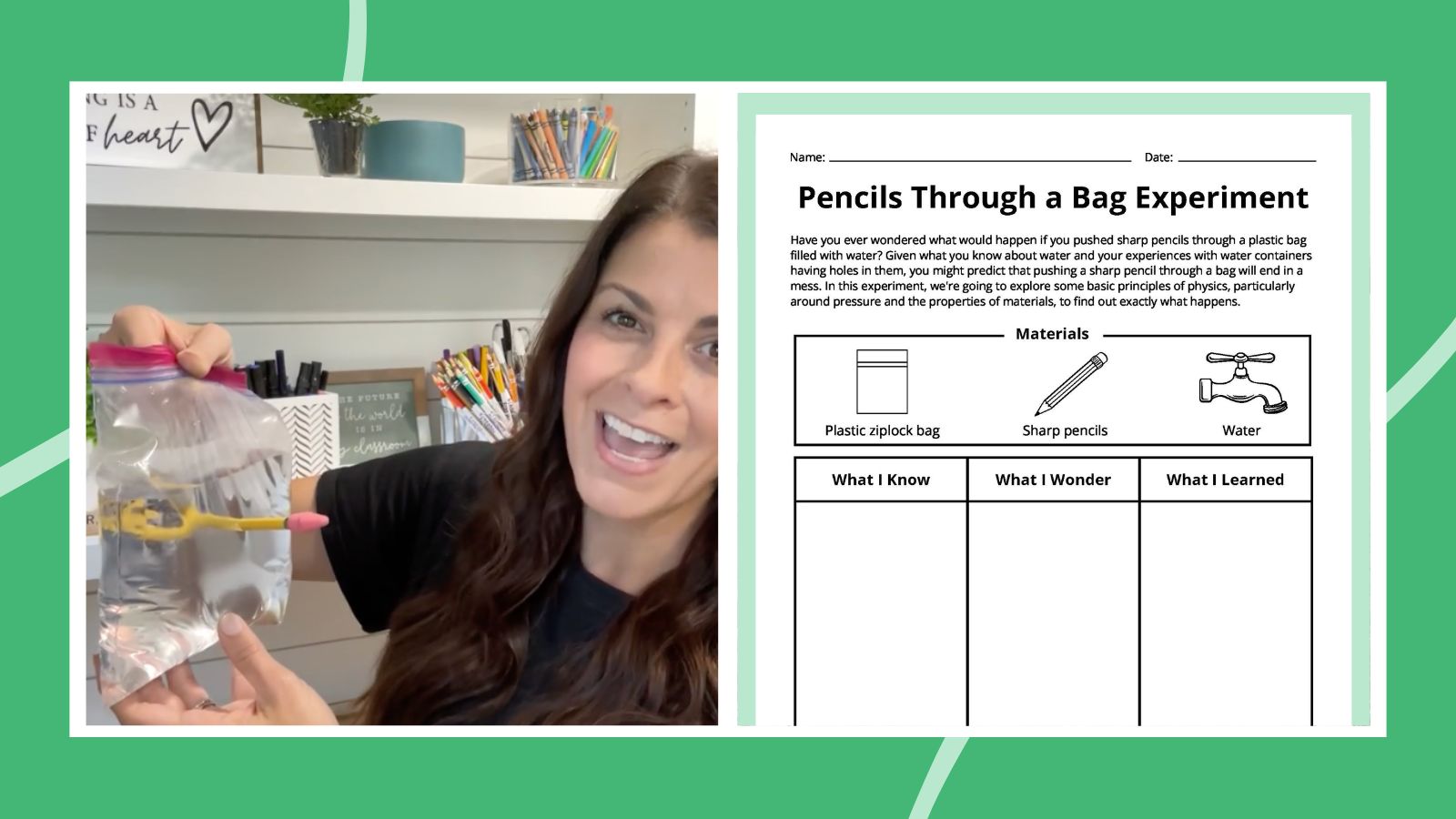If you are teaching a lesson about polymers or need a quick and efficient experiment for a day in the classroom, this experiment and fun activity is a fan favorite. I really love this simple “pencil through a bag of water” experiment. The setup for the experiment takes minutes and you only need a couple of items that you likely already have in your classroom. The kids get so excited about it too!
Video: Pencil Through a Bag of Water Experiment
This video shows easy step-by-step instructions to follow along during the experiment.
Materials Needed
- Sharpened pencils
- Plastic ziplock bags
- Water
Step-by-Step Instructions
Follow these directions to complete your own “pencil through a bag of water” experiment:
- If you have a sink in your classroom, you can quickly set this up while students are eagerly watching. I fill a quart- or gallon-sized plastic bag with water. Make sure it is securely closed. You could use tape, but I simplify things and have never needed it.
- Show the students your container or handful of sharpened pencils. They often squeal with excitement when they hear you will try poking them through the bag. Ask them to predict what they think will happen. Give them time to make a prediction before you poke a pencil through.
- I like to call one student up to poke the first one through.
Science Behind the Pencil Through a Bag of Water Experiment
The pencil poke experiment is the perfect way to show how polymers work. Polymers have long flexible chains of molecules. When a sharp pencil is poked through the baggie, the pencil slides between the chain of molecules that make up the polymer. A seal is formed around the pencil by the molecule chains, so the water won’t get out. You can always ask students what will happen when you pull the pencil out. Just be ready with a bucket underneath!
And don’t forget to download your free experiment instructions and worksheet for students by filling out the form on this page!

